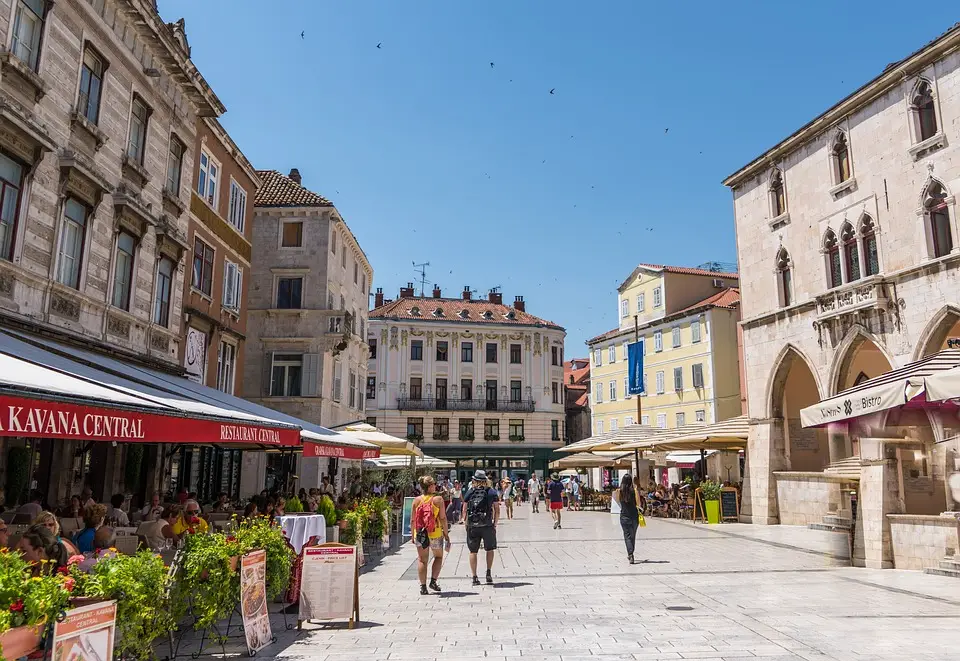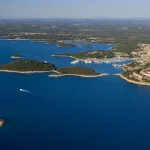As Poslovni Dnevnik/Jadranka Dozan writes, on an almost daily basis, new figures keep arriving that confirm the significant acceleration of the pace of Croatian tourism recovery in the past few weeks.
It can often be heard that more rooms and beds are wanted, and in addition to recording the state of overnight stays and arrivals, we learned recently that 878 thousand vehicles, or a quarter more than last year, were recorded on Croatia’s highways, with 49 million kuna in tolls collected, which is 29 percent more than last year.
The encouraging financial signals are provided by weekly updates from the Tax Administration’s data on fiscalised turnover across the country. According to the latest such report, the value of last week’s fiscalised bills/receipts at the level of all activities is one third higher than in the comparable week last year.
In the tourism sector, ie accommodation and food preparation and food service activities, bills worth 1.68 billion kuna were issued, which is almost 60 percent more than in the second week of August last year, when 1 billion kuna was reported.
As such, the tourism and hospitality sector, measured by the value of issued bills and receipts, has exceeded the pre-pandemic figures for the comparable August week of 2019 by 23.5 percent. A solid positive sign in these comparisons has been being recorded for several weeks now, and even the Minister of Finance Zdravko Maric has referred to this month as ”strong”.
The peak of the Croatian 2021 season in any case looks much better than its beginning or even its pre-season. Apart from the better epidemiological picture across Croatia than in some of its main Mediterranean competitors, the number of foreign tourists in relation to the initial signals was also contributed to by climate disasters in some European tourist destinations.
If we remain ”in the orange” on the so-called corona-map of the European Centre for Disease Prevention and Control (ECDC), it could easily happen that this year’s Croatian National Bank projections of total tourism revenue at the level of 70 percent of those from 2019 prove to be conservative and ultimately exceed the projected figure of around 7.4 billion euros.
These financial indicators come with some time lag, and in the meantime some more rapid signals remain. For example, an interesting aspect regarding the consumption and spending of foreigners in Croatia is provided by the reports of the central bank on non-cash payment transactions in Croatia.
The latest available data within the statistics of international payment transactions refers to the first half of the year, and indicates a significant increase in the reading of bank cards issued abroad.
During the month of June, for example, the value of card transactions by bank cards issued outside of the Republic of Croatia, which includes purchases of goods and services through various devices (from ATMs to POS devices and purchases with e-money) amounted to 1.85 billion kuna.
In the first six months of 2021, on the other hand, transactions worth 3.85 billion kuna were performed with foreign cards, which is about 1.5 billion kuna more than last year. However, in the first half of pre-pandemic 2019, foreigners (more precisely the holders of cards issued abroad) spent more than 6.7 billion kuna on Croatian cards, exceeding one billion kuna in April and 1.5 billion kuna in May.
The peak of arrivals and even the consumption of foreigners usually occurs during July and August. In the pre-crisis and record-breaking 2019, 10.3 billion kuna was spent on foreign cards in Croatia in those two months alone, and in July and August last year, the value of these payment transactions dropped to just 5.9 billion kuna.
These indicators of foreign consumption realised through foreign cards for the peak of the Croatian 2021 season will have to be waited on for a few months yet.
However, the trends indicated by the fiscalisation data suggest a significantly better overall picture of consumption than in the middle of the year, and the spending being done by foreign tourists certainly contributes to this.
If we look at the past two weeks of August in tourism and catering, more than 3.3 billion kuna of fiscalised turnover was recorded, compared to two billion recorded in the same period last year. This year’s August is stronger than that of pre-crisis 2019 (mid-month) by more than a fifth or more than 600 million kuna.
These increases were realised on a smaller number of issued bills, which suggests higher average consumption, including the impact of higher prices of certain services. The impact of tourism, of course, is also visible in the trade sector. Over the past two weeks, the turnover in the wholesale and retail trade category was higher by 1 billion kuna (6.55 versus 5.5 billion) than last year, and compared to the comparable two weeks of the previous year, by about 660 million kuna.
The Tax Administration periodically provides a somewhat more detailed picture of spending and consumption by activities. For now, this more detailed data has been available for the end of July. And that information, for example, shows that in restaurants and cafes (ie food and beverage preparation and serving activities) in Croatia last month there was a turnover of 2.59 billion kuna.
That’s 755 million kuna, or 41 percent more cash turnover (which, along with banknotes, includes cards and other payments, excluding remittances to transaction accounts) than last July. Although the data refers to the whole of Croatia, this jump in the turnover of caterers largely reflects the impact of the recovery in tourist spending.
In any case, the July fiscalised turnover of restaurants, cafes and related activities was more or less equal to that seen back in the July of pre-pandemic 2019, in which 2.6 billion kuna in turnover was reported.
If June is counted, over the past two months, caterers have issued bills worth almost four billion kuna in total. Compared to last June and July, this is equal to one billion kuna more, but compared to the same period in 2019, it is still about 10 percent less.
For more on how businesses are doing in the Croatian 2021 season, follow our business section.











